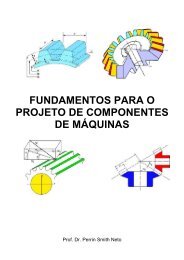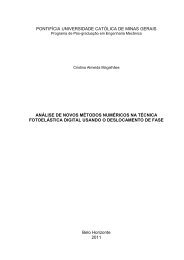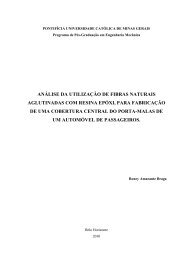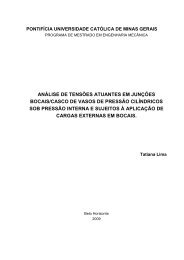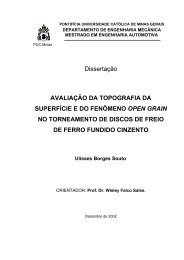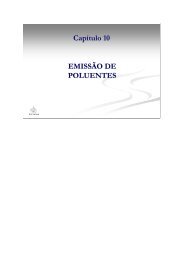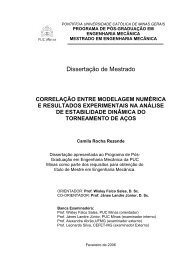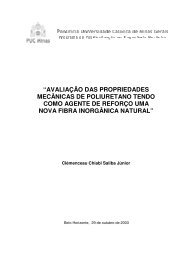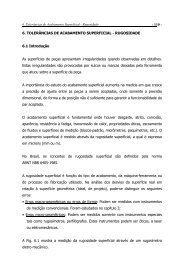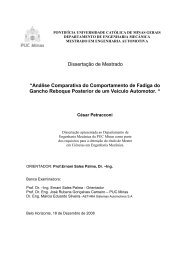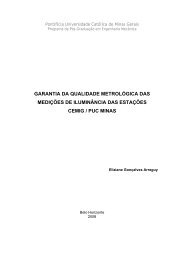Tese de Doutorado Gilmar - Programa de de Pós-Graduação em ...
Tese de Doutorado Gilmar - Programa de de Pós-Graduação em ...
Tese de Doutorado Gilmar - Programa de de Pós-Graduação em ...
Create successful ePaper yourself
Turn your PDF publications into a flip-book with our unique Google optimized e-Paper software.
ABSTRACT<br />
Using the technique of finite el<strong>em</strong>ent to the simulation of mechanical forming<br />
processes and the assessment of mechanical properties of materials is still a<br />
challenge. Analysis of cold forming processes has been accomplished, with relative<br />
success, as well as optimizations during project <strong>de</strong>velopment. Depending on the<br />
<strong>de</strong>sired shape, forming requires several stages, being each stage responsible for a<br />
small <strong>de</strong>formation. However, obtaining an efficient production sequence, from<br />
economical and technical standpoints is, in many instances, achieved by <strong>em</strong>pirical<br />
methods which require a number of tests and adjustments. The present work<br />
assessed the influence of the extrusion process variables as well as their restrictions<br />
in cold inverted extrusion forming by physically simulating closed-form matrices and<br />
hydraulic presses. Simultaneously, extrusion stages of ABNT 1010 steel were<br />
simulated by applying finite el<strong>em</strong>ent analysis consi<strong>de</strong>ring or not the existence of<br />
<strong>de</strong>formation paths. The flow curves, effective stress versus effective strain, used in<br />
numerical simulations of 1 ˚ stage were obtained by means of conventional tensile<br />
test and instrumented in<strong>de</strong>ntation tests. The techniques <strong>em</strong>ployed revealed to be<br />
effective for obtaining both flux curves as well as effective <strong>de</strong>formation profiles using<br />
the software Deform 2D. Load prediction was also performed by obtaining a mean<br />
error distribution with standard <strong>de</strong>viation 14.32, 4.22, 11.02 and 4.06 respectively for<br />
ABNT 1010 steel in the cold-drawn and hot-rolled directions with different puncture<br />
geometries. From the obtained results for the first <strong>de</strong>formation step a technique was<br />
proposed for <strong>de</strong>termining flux curves which take the <strong>de</strong>formation path into account.<br />
Keywords: Numerical simulation. Forming. Hardness in<strong>de</strong>ntation test.



